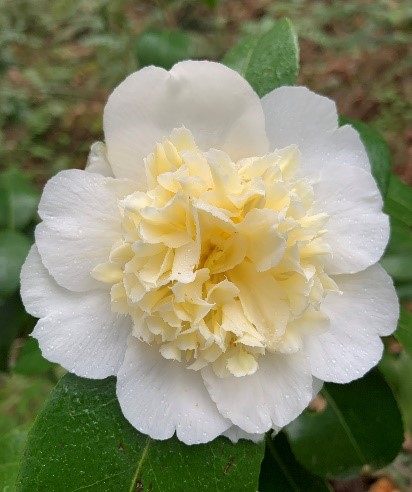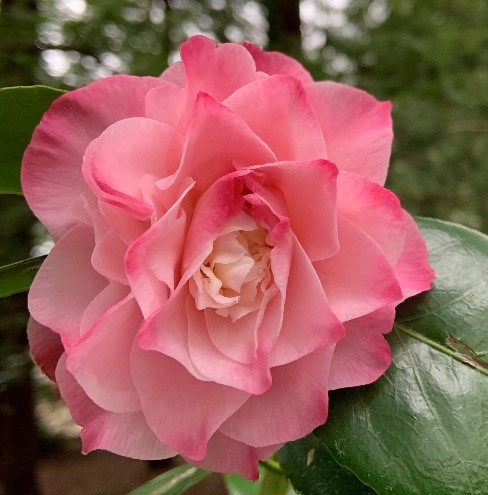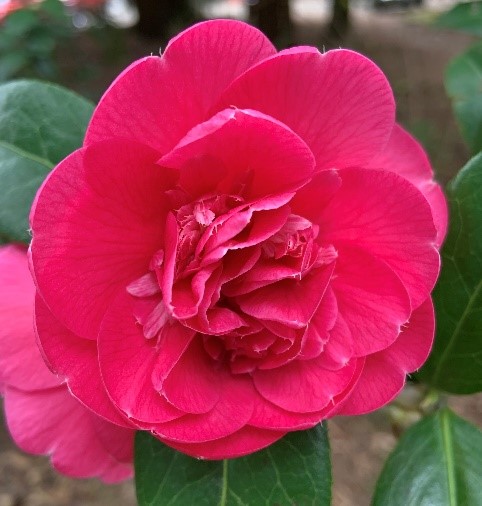Camellias are flowering, shade-loving, small evergreen trees or shrubs that are available in a remarkable range of colors, forms, and sizes. Depending on the variety they may bloom in late fall, winter and early spring adding cheer to the garden when little else is in flower. Their blooms, from white or pink to deep red, some as simple as a wild rose, others as full blown as a peony are set against glossy dark green leaves.
The most common species found in the Pacific Northwest are the ornamental C. japonica, C. sasanqua and their hybrids, which are the source of hundreds of garden cultivars. The Lake Wilderness Arboretum’s Legacy Garden features several C. japonica cultivars that feature white, pink or red flowers (C. japonica ‘Laura Schafer’, C. japonica ‘R.L.Wheeler’, C. japonica ‘Bob Hope’). While most camellias have dark green leaves, the Arboretum has one C. sasanqua that has variegated leaves – C. sasanqua ‘Hana-Daijin Special’.
Another camellia species that is not as well known in the PNW but is of great economic importance in India and Asia is the C. sinensis. The leaves of this plant are processed to create the popular beverage of tea. The LWA has one C. sinensis displayed in the Legacy Garden.
While some people may claim that growing a camellia is tricky, they really are very easy plants. The best thing you can do for your camellia is to plant it slightly higher than the surrounding soil so that excess water drains away from the center of the plant. It also is not a big fan of having to compete for nutrients so don’t plant it beneath a tree with shallow roots.



